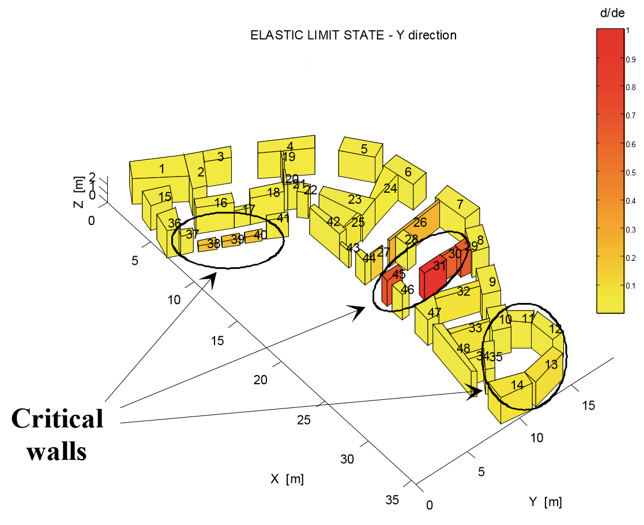V. Bosiljkov1, V. Bokan-Bosiljkov2 and R.Žarnić3
- Assistant Prof., University of Ljubljana, Faculty of Civil and Geodetic Engineering, Chair for Research in Materials and Structures, Jamova cesta 2, 1000 Ljubljana, Slovenia. vbosiljk@fgg.uni-lj.si
- Assistant Prof., University of Ljubljana, Faculty of Civil and Geodetic Engineering, Chair for Research in Materials and Structures, Jamova cesta 2, 1000 Ljubljana, Slovenia. vbokan@fgg.uni-lj.si
- Assosiate Prof., University of Ljubljana, Faculty of Civil and Geodetic Engineering, Chair for Research in Materials and Structures, Jamova cesta 2, 1000 Ljubljana, Slovenia. rzarnic@fgg.uni-lj.si
ABSTRACT
The knowledge of the structural behaviour of existing masonry requires a multilevel approach, with proper application of different diagnostic and assessment methodologies. The paper presents successful application of the results of in-situ tests on modelling the behaviour of historical structures. In order to obtain reliable material parameters for the application of different numerical models, different test methodologies a combination of destructive tests (DT), minor destructive tests (MDT) and non-destructive tests (NDT) were performed. Following this, two different models were applied for the assessment of seismic resistance of Pišece Castle – structural element model (SEM) for non-linear seismic analysis and 3D finite element model (FEM) for linear analysis by means of modal response spectrum analysis. The results of numerical analysis provided valuable information of the load-bearing capacity of structures, their seismic resistance as well as possible causes for the observed crack patterns.
KEYWORDS: numerical modelling, historical structures, SEM, FEM, in-situ tests
B4-3



